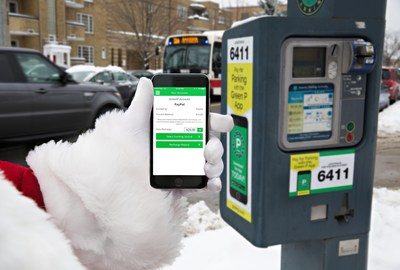
- Stats: 1494 0
- Author: Linda
- Posted: February 27, 2019
- Category: Mobile Payments
Survey: Canadians are increasingly choosing alternative payment tools
Despite being one of the highest banked populations in the world, Canadians are increasingly turning to alternative payment tools according to a recent study. Adoption of these payments tools – including PayPal, mobile and prepaid – has increased by 14
How Canadians Pay Today, which surveyed 1,501 Canadian consumers, was conducted by Leger and commissioned by the Canadian Prepaid Providers Organization (CPPO), the voice of the rapidly growing $3.8 billion prepaid payments industry in Canada. Prepaid has grown rapidly as a major form of electronic payment without involving credit. It is being used to power new fintech and paytech solutions aimed at improving customer experience, financial inclusion and faster payments delivery through its ease of use and ubiquity of acceptance.
“As Canadians increasingly opt for non-traditional banking solutions, they are raising the bar for a faster, frictionless experience and added convenience in the entire payments industry,” said Peter Read, CPPO Chairman of the Board. “Prepaid has emerged as a popular foundation for innovations in bank account replacement, money transfer, in-app payments and more.”

The study revealed that while Canadians remain loyal to their credit and debit cards, the continued decline in the use of cash and checks has fueled significant growth and adoption of alternative payment tools over 2016. Non-traditional banking solutions are being adopted, particularly by younger Canadians, for convenience and cost-savings along with new apps that help them stick to a budget. Canadians also expressed a preference for real-time payment of wages and to be able to receive incentives via a prepaid card.
Detailed findings and trends include:
As cash purchases continue to slow, consumers are ready for non-traditional banking.
Nearly two-thirds (65 percent) of consumers have made fewer cash purchases than the year before, compared to 58 percent in 2016, especially millennials (75 percent). While the vast majority (99 percent) of Canadians have a bank account, around three in ten (29 percent) want to sidestep traditional banking in favour of new tools that offer convenience and cost savings.
Credit and debit cards remain popular, but adoption of alternative payment tools is on the rise.
Credit and debit cards are used most frequently by Canadians (40 and 33 percent respectively), followed by cash (18 percent). However, 73 percent – up from 59 percent in 2016 – have started using other payment tools including PayPal (55 percent), prepaid cards (27 percent), Apple Pay (11 percent), Google Pay (7 percent), and other mobile payments (7 percent). Prepaid cards saw the highest growth, jumping seventeen percentage points since 2016. Among those using these tools, six in ten (61 percent) say they are comfortable with their security.
Canadians are turning to new tools and apps to help them budget.
More than four in ten (43 percent) Canadians struggled to stay within budget in the past year and 23 percent often have a running balance on their credit card. Canadians find that certain tools are useful in helping them stick to a budget including easy-to-use online tools that track spending (46 percent) and budgeting apps (43 percent) as well as reloadable prepaid cards free of interest charges and overdraft fees that limit spending (34 percent). Three in ten (31 percent) currently use an app to manage their finances and nearly half (46 percent) with children under 18 years old would give their children a spending allowance on a prepaid card to help control and monitor their spending.
Evolving workplace arrangements and technology call for real-time pay.
Statistics Canada estimates that 2.18 million Canadians are taking part in some form of temporary work.1 Evolving workplace arrangements and technology are shaping payment expectations among the workforce. Six in ten (62 percent) Canadians said they feel more loyal to a company that pays them in real time and 39 percent would prefer to be paid via a prepaid card. Prepaid capabilities are rapidly replacing cheques as a less expensive and more secure option for issuing payments, incentives and disbursements. A third of workers (33 percent) prefer to receive incentives through a prepaid card to enjoy real-time fund availability and flexibility in redeeming their pay.


